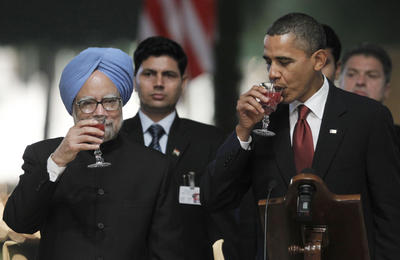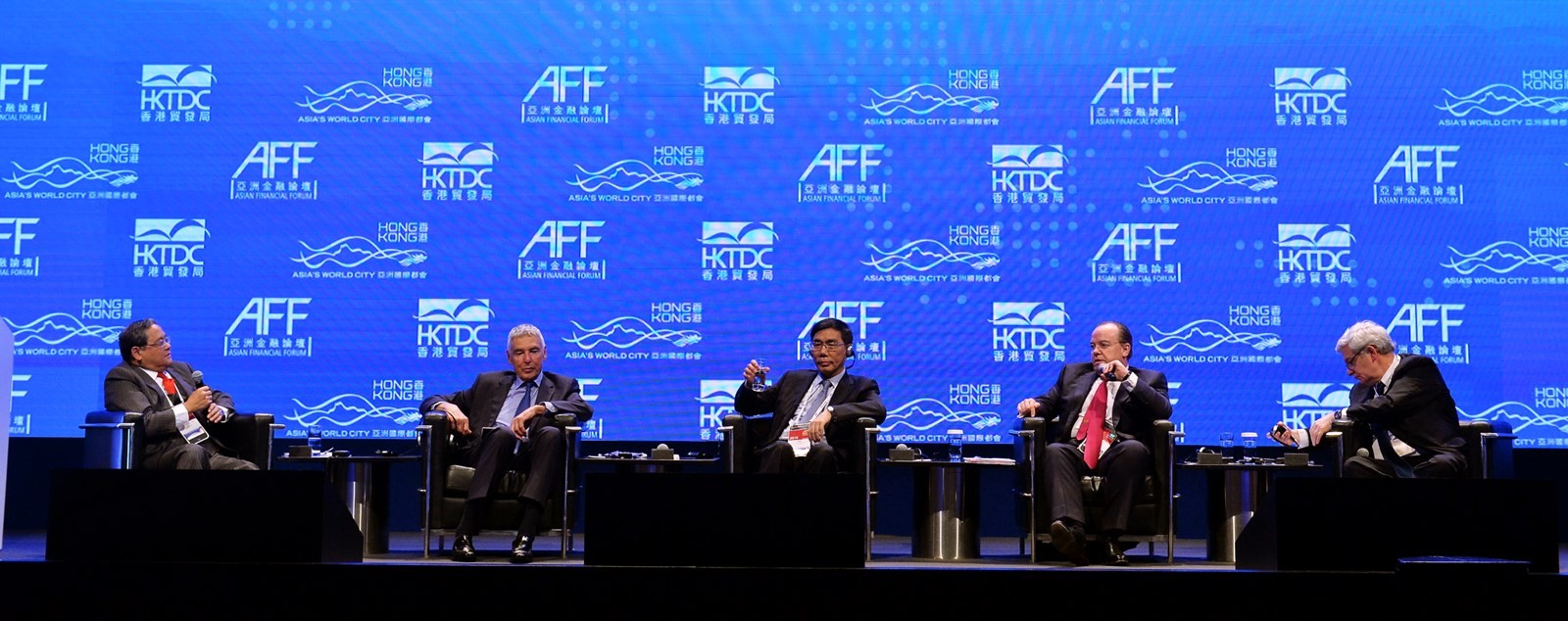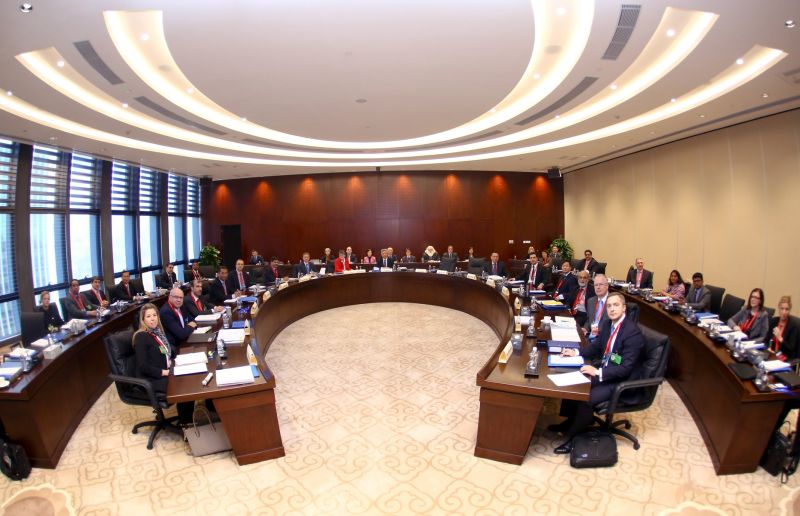Investment
India’s high points and lows: no time for backsliding
Author: Rajiv Kumar, FICCI, New Delhi Last year has indeed been a rollercoaster year for India. The high point has been India securing a firm place on the high table of global governance. The process started with the G-20 summit in November 2008 and culminated in the second half of this year that saw the head

Author: Rajiv Kumar, FICCI, New Delhi
Last year has indeed been a rollercoaster year for India. The high point has been India securing a firm place on the high table of global governance.

The process started with the G-20 summit in November 2008 and culminated in the second half of this year that saw the heads of government of all five Security Council members visiting Delhi. The six months between July and December have been unprecedented with India hosting the prime ministers of the UK and China and the Presidents of the US, France and Russia. Even more importantly, except for China, all other leaders recognised India’s claim to be a permanent member of the UN Security Council. This was also endorsed by Japan and Germany, themselves candidates for permanent membership of the Security Council. According to the world, India arrived on the global arena in 2010.
Unfortunately the domestic situation contrasted sharply with the external environment. Despite the sustained strong economic performance, the year will be remembered for its lows of scams and scandals. It will be remembered for corruption becoming systemic and threatening not only the country’s brand equity but its economic prospects as well. The second half of the year, which saw the country hosting the world’s top leaders, witnessed a series of sordid deals, unprecedented in their scale and audacity. These included the corrupt mess of the commonwealth games; the scandalous nexus of the powerful in brazenly grabbing prime land in Mumbai in the name of the country’s martyrs in the Adarsh housing society case; and to top it all the most audacious, gigantic and ‘in your face’ flouting of all governance norms in the case of the 2G spectrum allocation. The under belly of the Delhi Durbar was exposed to the global gaze by the publishing of the infamous, ‘Radia’ tapes, that revealed not only the chicanery and back stabbing shenanigans of the country’s power elite but also the depth of the rot that has set in to our administrative machinery. Anyone observing the domestic scene would have found it extraordinarily difficult to believe that India was getting prepared to occupy a place on the high table of global governance. What an irony that all this went on under a government headed by someone whose integrity and honesty is beyond any doubt!
Is there any way to bridge this chasm between global expectations of India and its apparent incapacity to deliver on its potential?
There is thankfully hope still, embedded in some of the structural reforms that have been already put in place. These include the freedom of the press that has spawned a vibrant, vigorously competitive, if at times a less than responsible electronic and print media. This is reinforced by the right to information, the UPA (United Progressive Alliance) government’s single most important contribution to the our republic’s institutional framework. Right to information empowers the citizen and the press and increases system accountability.
But perhaps the most important driver for taking India to its rightful place in the global community is the dynamism and vigour of its entrepreneurial class and the corporate sector with its vast army of professionals and the concomitant expansion of the middle classes. The unshackling of this entrepreneurial energy with the reforms in the early nineties and its further nurturing by the National Democratic Alliance (NDA) government has ensured that India’s economic performance will continue to be satisfactory and keep it attractive to foreign investors and exporters. Yet, given the governance deficit, the economic performance will remain only satisfactory and below optimal. For the country to achieve its true potential rate of economic growth and generate the necessary employment opportunities, the government will have to play its role and bring the delivery of public goods and services, like law and order and corruption free administration, to acceptable levels.
Today we have to guard against slippage that could threaten or constrain the private sector’s ability to strike a good deal and push forward with investments when it sees an opportunity. There is talk of curbing the right of a firm to merge with another or divest its holdings to foreigners in the pharmaceutical sector. This is fraught with the danger of bringing back the omniscient government which only breeds inefficiency and kills enterprise. Environmental fundamentalism and a regime of ‘go and no-go areas’, especially when applied with retrospective effect, creates uncertainty and vitiates the investment environment. Unbridled populism or ideological bias should could result in mining laws that make scientific mining all but impossible and drive out serious investors, leaving the field open for the unscrupulous miners. They work in a nexus with the politicians and with impunity damage the environment and trample on the rights of the indigenous people while feigning to observe all the statutory provisions that in the first place are flawed and not amenable to honest compliance.
For the first time since 1991, there is a real danger today of pro-private sector reforms being reversed. As might be expected, the reason given is to achieve pro ‘aam aadmi‘ growth (Hindi for ‘Common Man’) and to safeguard national interest. This is dangerous rhetoric which must be resisted. It is time therefore for all of us, who want India to emerge as a global power over the next three decades, to give up opportunism at all levels, however attractive the reward might be. We need to prevent a reversal back to the seventies style populism and exert maximum pressure for carrying forward the reform agenda that is palpably stalled. Complacency will be fatal.
Rajiv Kumar is Director General of Federation of the Indian Chambers of Commerce and Industry, New Delhi, and was formerly President of ICRIER.
An earlier version of this essay appeared in ‘Business Times’.
This is part of a special feature: 2010 in review and the year ahead.
- India’s moment of truth
- India: sustaining high growth needs new reform momentum
- China and India: High on octane, low on clean
Read the original:
India’s high points and lows: no time for backsliding
Business
Asian Financial Forum (AFF) Features 2,800+ Government, Finance and Business Leaders

Co-organised by the Hong Kong Special Administrative Region (HKSAR) Government and the Hong Kong Trade Development Council (HKTDC), the two-day Asian Financial Forum (AFF) came to a successful conclusion today at the Hong Kong Convention and Exhibition Centre. (more…)
China
Asian Infrastructure Investment Bank opens for Business
The inaugural meeting of the Asian Infrastructure Investment Bank’s Board of Directors was convened in Beijing on January 17, 2016. The Board of Directors is made up of 12 Directors, of which 9 Directors represent regional members and the others non-regional members. Mr. Jin Liqun, President of the AIIB, chaired the meeting.

The inaugural meeting of the Asian Infrastructure Investment Bank’s Board of Directors was convened in Beijing on January 17, 2016. The Board of Directors is made up of 12 Directors, of which 9 Directors represent regional members and the others non-regional members. Mr. Jin Liqun, President of the AIIB, chaired the meeting. (more…)
Banking
Beloved panda was wartime ambassador warming hearts of people
Ming the panda gets behind the camera for photographer Bert Hardy in 1939 in London Zoo. In the chair is Hardy’s son Mike. Getty Image She was black, white and furry, far from home, and loved having her tummy tickled, especially by princesses.
Ming the panda gets behind the camera for photographer Bert Hardy in 1939 in London Zoo. In the chair is Hardy’s son Mike. Getty Image She was black, white and furry, far from home, and loved having her tummy tickled, especially by princesses.
Follow this link:
Beloved panda was wartime ambassador warming hearts of people











